Kenneth L. Gentry Jr.'s Blog, page 23
September 8, 2023
THE GREAT TRIBULATION vs. THE POSTMILLENNIAL HOPE? (3)
 PMW 2023-070 by Kenneth L. Gentry, Jr.
PMW 2023-070 by Kenneth L. Gentry, Jr.
The great tribulation is deemed by many to destroy an possibility of a long-range hope for history, such as is in postmillennialism. In this ongoing series I am explaining how the postmillennialist can explain the great tribulation, while maintaining his historical hope for the long run. This is the third article in this series. So, let’s get to work.
As per my last article, Jesus forthrightly declares that the great tribulation events will occur in the first century. That being the case, we should expect to find evidence that they did in fact occur then. And we do! Let us survey a few of these. We will see the first-century historical fulfillment of several of his statements in Matthew 24.
False prophets
In Matthew 24:5 and 11 Jesus warns about false christs and prophets. That is, he is warning about the danger of false religious enthusiasts who will arise in an attempt to distract and disturb his disciples.
False religious leaders are an abundant problem in that day, as we see in the examples of Theudas (Acts 5:36), Simon (Acts 8:9, 10), and Paul’s general warning to the Ephesian elders (Acts 20:29–30). For instance, Paul expresses his fear for the Ephesian church: “I know that after my departure savage wolves will come in among you, not sparing the flock; and from among your own selves men will arise, speaking perverse things, to draw away the disciples after them” (Acts 20:29–30).
The historical record of the first-century Jewish historian and priest Josephus (ca. AD 37–101) also documents false religious leaders who operated during the Jewish War with Rome which brought about the destruction of the temple: “such men deceived and deluded the people under pretense of divine inspiration” (Jewish Wars 2:13:4 §259). He speaks of others as “impostors and deceivers [who] persuaded the multitude to follow them into the wilderness and pretended that they would exhibit manifest wonders and signs” (Antiquities 20:8:6 §167–68).
Clearly, Scripture and contemporary historical records testify of the very real danger of false religious teachers leading the Jews astray shortly after Christ dies.
Wars and rumors of wars
Matthew 24:6 and 7 speaks of “wars and rumors of wars.” This is a sign that we constantly hear about today in eschatological discussions. Since there have always been wars, to which ones is Jesus referring? How is this rather broad sign helpful?
To understand the significance of this sign we must consider an important political fact of first-century history. When the Lord gave this sign to his audience they were experiencing the famous pax Romana (Latin for “the peace of Rome”). But what is this “peace of Rome”? And how is it significant for understanding Jesus’ prophecy?
By military conquests and political savvy, the Emperor Augustus Caesar established this period of remarkable peace shortly before Christ was born (he was the reigning emperor when Jesus was born, Luke 2:1). This was an impressive time of widespread peace that enjoyed freedom from war. The first-century Jewish philosopher Philo (ca. 29 BC–AD 50) speaks of the Roman empire being “free from all sedition, and regulated by and obedient to admirable laws” (Embassy to Gaius 2:8). Roman naturalist and writer Pliny the Elder (who died in the eruption of Mount Vesuvius in AD 79) describes “the immeasurable majesty of the Roman peace” (Natural History 27:3). The third-century church father Origen (ca. 182– 254) mentions the “abundance of peace that began at the birth of Christ” (Against Celsus 2:30).
The Beast of Revelation (Kindle version) by Ken Gentry
A popularly written antidote to dispensational sensationalism and newspaper exegesis. Convincing biblical and historical evidence showing that the Beast was the Roman Emperor Nero Caesar, the first civil persecutor of the Church. The second half of the book shows Revelation’s date of writing, proving its composition as prior to the Fall of Jerusalem in A.D. 70. A thought-provoking treatment of a fascinating and confusing topic.
For more study materials, go to: KennethGentry.com
New Testament scholar, Bo Reicke, notes that “in the Roman Empire proper, the period of peace remains comparably undisturbed until the time of Nero.” The emperor Nero breached the pax Romana by engaging the Jewish War that resulted in the destruction of Jerusalem and the Jewish temple. Consequently, the Lord’s prophecy offers a significant sign that warns Christians that despite the pax Romana, they will hear of “wars and rumors of wars” when “nation would rise up against nation.”
When the Jewish War erupted in the late AD 60s, it broke the famous pax Romana. In this important war, Rome victoriously marched across Israel and mercilessly crushed that restive state. Though the Jewish Revolt initially flares up in late AD 66, the resulting formal war began in the Spring of AD 67. That was when Nero formally commissioned his general Vespasian to crush the revolt. As Josephus puts it: “Nero upon Cestius’s defeat, was in fear of the entire event of the war, and thereupon made Vespasian general in this war” (Jewish War Pref., 8 §21; cp. 3:1:1–3 §1–8).
In that war Syria, Arabia, Egypt, and other nations aligned themselves against Israel. Josephus notes that Vespasian secured “a considerable number of auxiliaries from the kings in that neighborhood” (Jewish War 3:1:3 §8). He later writes:
“there were also a considerable number of auxiliaries got together, that came from the kings Antiochus, and Agrippa, and Sohemus, each of them contributing one thousand footmen that were archers, and a thousand horsemen. Malchus also, the king of Arabia, sent a thousand horsemen, besides five thousand footmen, the greatest part of which were archers; so that the whole army, including the auxiliaries sent by the kings, as well horsemen as footmen.” (Jewish War 3:4:2 §68)
Before Jerusalem Fell (Kindle version) (by Ken Gentry)
Doctoral dissertation defending a pre-AD 70 date for Revelation’s writing. Thoroughly covers internal evidence from Revelation, external evidence from history, and objections to the early date by scholars.
See more study materials at: www.KennethGentry.com
When Vespasian’s son Titus took over the fight, Josephus mentions the greatly increased number of foreign national troops engaged in the siege of Jerusalem: “those auxiliaries that came from the kings, being now more in number than before, together with a considerable number that came to his assistance from Syria” (Josephus, Jewish War 5:1:6 §42).
But not only does this era experience the Jewish War, but it also resulted in a great and destructive civil war in Rome itself. In June of AD 68 Nero committed suicide as Rome erupts into civil upheaval and military strife (Josephus, Jewish War Pref., 9 §23). Britain, Germany, and Gaul revolt against Rome and seek to break out of the empire. Rome feared that the Parthians from the East would mobilize because of the Empire’s disarray during that time.
Roman historian Tacitus (AD 56–117) writes: “The history on which I am entering is that of a period rich in disasters, terrible with battles, torn by civil struggles, horrible even in peace. Four emperors failed by the sword; there were three civil wars, more foreign wars and often both at the same time” (Histories 1:2). He laments that “Rome and Italy are thoroughly wasted by intestine war” (Hist. 4:75). Josephus reports similarly that: “all was in disorder after the death of Nero” (Jewish War Pref. 1:2 §5).
Thus, both Jerusalem and Rome were experiencing nation arising against nation (Matt 24:7). These “wars and rumors of wars” (Matt 24:6) were truly signs for that first-century generation.
The historical facts are fitting our exegetical understanding of the Olivet Discourse and its emphasis on the great tribulation. But there is more. Much more. Please join my in my next article.
OLIVET IN CONTEXT: A Commentary on Matthew 21–25
I am currently researching a commentary on Matthew 21–25, the literary context of the Olivet Discourse from Matthew’s perspective. My research will demonstrate that Matthew’s presentation demands that the Olivet Discourse refer to AD 70 (Matt. 24:3–35) as an event that anticipates the Final Judgment at the Second Advent (Matt. 24:36–25:46). This will explode the myth that Jesus was a Jewish sage focusing only on Israel. The commentary will be about 250 pages in length.
If you would like to support me in my research, I invite you to consider giving a tax-deductible contribution to my research and writing ministry: GoodBirth Ministries. Your help is much appreciated!
September 5, 2023
THE GREAT TRIBULATION vs. THE POSTMILLENNIAL HOPE? (2)
 PMW 2023-069 by Kenneth L. Gentry, Jr.
PMW 2023-069 by Kenneth L. Gentry, Jr.
This is my second in a multi-part series explaining how we can believe in postmillennialism, even though Jesus teaches about “the great tribulation” that is to come. In this series of articles we will learn a remarkable fact: The great tribulation is past. Indeed, it occurred long ago in the first century and was concerned with the destruction of the temple in AD 70.
Obviously, if this is so, then the great tribulation punctuated the beginning of Christianity (as the new covenant-phase of God’s kingdom) and has no direct bearing on the end of the Church Age (supposedly lying in our near future). Thus, it does not contradict postmillennialism’s historical optimism. Let us consider the evidence.
Most evangelicals focus on the remarkable judgments in the Matthew 24. And they do so to such an extent that they overlook important contextual clues that go against the popular conception of the great tribulation. And they do this despite the fact that these clues are quite clear and compelling.
These clues revolve around Matthew 24:34 which involves the key observation for a proper understanding of the great tribulation. This is the text we must focus upon; it will be our guiding star shedding light on our pathway through this dark and frightening passage. Let us note:
Literary setting
First, this verse links the great tribulation to the first century. Indeed, Christ specifically declares that the great tribulation will occur within the lifetime of his original audience. He clearly establishes the time frame in which it will come to pass: “Truly I say to you, this generation will not pass away until all these things take place” (Matt 24:34).
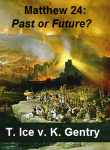
Matthew 24 Debate: Past or Future?
(DVD by Ken Gentry and Thomas Ice)
Two hour public debate between Ken Gentry and Thomas Ice on the Olivet Discourse.
See more study materials at: www.KennethGentry.com
We find important interpretive evidence in the historical and contextual setting of Matthew 24 that helps us understand this statement. We must analyze Jesus’ statement in its own historical and literary setting. That is, we must look back to Matthew 23 as the lead-in to Matthew 24. Let us see how this context helps our understanding.
In Matthew 23 Jesus calls down woes upon the scribes and Pharisees of his generation (Matt 23:13, 14, 15, 16, 23, 25, 27, 29). They are his antagonists; they are the backdrop against which his prophecy must be understood. As he concludes his woes section, he solemnly prophesies in Matthew 23:32: “Fill up, then, the measure of the guilt of your fathers.” In other words, they are guilty; now they will fill up their final guilt.
An important reason motivates Jesus’ denunciation of the Pharisees: they would be filling up the measure of the guilt of their fathers by attacking Christians. Notice Matthew 23:34–36:
“Behold, I am sending you prophets, and wise men, and scribes, some of them you will kill and crucify, some of them you will scourge in your synagogues, and persecute from city to city, that upon you may fall the guilt of all the righteous blood shed on the earth. Truly I say to you, all these things will come upon this generation.”
The very setting in which Christ is delivering the Olivet Discourse is one of impending judgment upon first-century Jerusalem.
We must understand that the scribes and Pharisees live in a very important generation. Theirs was the time in which the Messiah comes. Tragically, “he came unto his own, and his own received him not” (John 1:11). First-century Israel lived in “the fullness of time” (Mark 1:15), but they missed its opportunity. They experienced the very era that “many prophets and righteous men desired to see” (Matt 13:17; cp. John 8:36), but were blind to it. They lived through “the time of your visitation,” but “did not recognize” it (Luke 19:44). Indeed, Jesus “wanted to gather” them together in his care, but they “were unwilling” (Matt 23:37).
Thus, in Matthew 24:34, Jesus warns: “Truly I say to you, this generation will not pass away until all these things take place.” The ones to whom he is speaking (his first-century disciples, Matt 24:1–2) will recognize the judgments in the Lord’s great tribulation proclamation. This is a very clear and dogmatic statement.
We must note that he states here that this generation will not pass away until all these things take place. That includes the great tribulation mentioned in Matthew 24:21. Matthew 24:34 employs virtually identical language to the Matthew 23:36 statement regarding the soon-coming persecution of Christians: “Truly I say to you, all these things shall come upon this generation.”
Historical setting
Second, this prophecy specifically focuses on the first-century temple toward which Jesus is physically facing. Let us notice what prompted the Olivet Discourse. In Matthew 23:37, 38, we read of a broken-hearted Savior lamenting:
“O Jerusalem, Jerusalem, who kills the prophets and stones those who are sent to her, how often I wanted to gather her children together, the way a hen gathers her chicks under her wings, and you were unwilling. Behold, your house is being left to you desolate.”
 An Eschatology of Victory
An Eschatology of Victory
by J. Marcellus Kik
This book presents a strong, succinct case for both optimistic postmillennialism and for orthodox preterism. An early proponent in the late Twentieth-century revival of postmillennialism. One of the better non-technical studies of Matt. 24. It even includes a strong argument for a division between AD 70 and the Second Advent beginning at Matt. 24:36.
For more Christian educational materials: www.KennethGentry.com
The very Jerusalem sprawling before him (Matt 23:37a), the land where the prophets were killed while openly defying God (Matt 23:31), those people who had rejected his loving overtures (Matt 23:37b), that temple now being left desolate (Matt 23:38) — these are in Jesus’ mind and upon his heart as he prophesies the great tribulation.
Notice his own disciples’ response to his solemn declaration against the temple. Moments after his warning that their holy house was being left desolate, we read: “Jesus came out from the temple” (Matt 24:1). That was the very temple he had just declared is being left desolate (Matt 23:38). Then as he “was going away” from that first-century temple, his disciples “came up to point out the temple buildings to him” (Matt 24:1b). Then we read in Matthew 24:2:
“Do you not see all these things? Truly I say unto you, not one stone here shall be left upon another that shall not be thrown down. And as he was sitting on the Mount of Olives, the disciples came to him privately saying, ‘Tell us when shall these things be, and what will be the sign of your coming, and of the end of the age?’”
As a matter of historical and archaeological fact, that temple to which Jesus refers is destroyed in AD 70. No temple has existed in Jerusalem since that time. The Lord’s prophecy relates to a temple that was actually destroyed just forty years later — a “generation” later (forty years = a generation; Num 32:13; Psa 95:10).
Specific command
Third, Jesus commands those particular people before him to do something. In Matthew 24:15 he discusses the “abomination of desolation” preparing his disciples for “the great tribulation” (Matt 24:21): “Let those who are in Judea flee to the mountains.” Clearly this is not a worldwide phenomenon for he limits it to Jerusalem and Judea — because that is where the temple is located.
We know from history that the Jerusalem church heeded Christ’s warning. They fled Jerusalem and went to Pella as the Jewish War with Rome broke out. The early church historian Eusebius (ca. AD 263–339) records this historical event:
“The people of the church in Jerusalem had been commanded by a revelation, vouchsafed to approved men there before the war, to leave the city and to dwell in a certain town of Perea called Pella. And when those that believed in Christ had come thither from Jerusalem, then, as if the royal city of the Jews and the whole land of Judea were entirely destitute of holy men, the judgment of God at length overtook those who had committed such outrages against Christ and his apostles, and totally destroyed that generation of impious men.” (Ecclesiastical History 3:5:3)
In these three major lines of evidence we see that the focus of the great tribulation prophecy is on first-century Jerusalem and the temple. Regardless of contemporary “prophecy experts,” the Lord locates the time of the great tribulation in a first-century event. Thus, in this one major argument we see that “the great tribulation” lies in our past. But there is more.
But there is more! So I hope you will join me by reading my third article in this series.
OLIVET IN CONTEXT: A Commentary on Matthew 21–25
I am currently researching a commentary on Matthew 21–25, the literary context of the Olivet Discourse from Matthew’s perspective. My research will demonstrate that Matthew’s presentation demands that the Olivet Discourse refer to AD 70 (Matt. 24:3–35) as an event that anticipates the Final Judgment at the Second Advent (Matt. 24:36–25:46). This will explode the myth that Jesus was a Jewish sage focusing only on Israel. The commentary will be about 250 pages in length.
If you would like to support me in my research, I invite you to consider giving a tax-deductible contribution to my research and writing ministry: GoodBirth Ministries. Your help is much appreciated!
September 1, 2023
THE GREAT TRIBULATION vs. THE POSTMILLENNIAL HOPE? (1)
 PMW 2020-068 by Kenneth L. Gentry, Jr.
PMW 2020-068 by Kenneth L. Gentry, Jr.
With this article, I am beginning a series on how contemporary postmillennialism deals with the great tribulation. This will basically be a survey of much of Matthew 24. This series ought to provide the interested reader with a basic understanding of how postmillennialism answers the complaint that Jesus’ prophecy of “the great tribulation” undermines our historical hope. As such, I am hoping postmillennial readers might share these studies with their non-postmillennial friends — especially if they really don’t need friends anymore.
This series is significant in that American evangelical Christians are intensely interested in what the New Testament calls “the great tribulation.” Many enormously popular, best-selling books have been written on this phenomenon, including The Late Great Planet Earth (30 million copies sold) and the Left Behind series (65 million copies).
The great tribulation is significant and merits careful consideration. This is not only because of its influence on contemporary evangelical thought, but (more importantly) because of its large presence in Scripture. The Bible touches on this theme in many contexts in both the Old and New Testaments. Furthermore, it seems to contradict postmillennialism’s historical optimism. Consequently, it will be crucial for us to study it in light of our presentation of the postmillennial hope.
The two most significant portions of Scripture treating the great tribulation are found in Jesus’ teaching and John’s Revelation. It appears prominently in one of Christ’s major recorded discourses: the Olivet Discourse in Matthew 24–25 (cp. Mark 13; Luke 21:5–36). The first thirty-four verses of Matthew 24 focus on the great tribulation, even employing the phrase in verse 21.
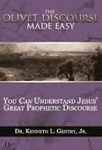
Olivet Discourse Made Easy (by Ken Gentry)
Verse-by-verse analysis of Christ’s teaching on Jerusalem’s destruction in Matt 24. Shows the great tribulation is past, having occurred in AD 70, and is distinct from the Second Advent at the end of history.
See more study materials at: www.KennethGentry.com
As pessimistic systems, the non-postmillennial eschatological positions see our future in the bleakest terms. And this largely due to the biblical teaching on the great tribulation. For instance, amillennial theologian Herman Hanko notes that postmillennialism “stands in sharp contrast with that whole body of biblical data which describes the days prior to the coming of Christ as days in which lawlessness abounds (Matthew 24:12)” and “Matthew 24 itself is strong proof of all this.” Premillennialist Wayne Grudem agrees: “Matthew 24 is such a difficult passage from the postmillennialist perspective.”
Any biblical eschatological system must be able to explain the great tribulation if it is to gain a hearing. But this is an especially important matter for postmillennialism due to its long-term, historical optimism. How can the postmillennialist propose an optimistic outlook for history if Christ, John, and other biblical writers warn of a time of great tribulation? The very idea of a great tribulation seems to conflict with the victorious outlook of postmillennialism.
In this series I will engage a brief overview of the Olivet Discourse. This overview will serve two purposes: (1) It will interpret this large and important issue in biblical prophecy. (2) It will demonstrate how the great tribulation fits within the optimistic outlook of postmillennialism.
The long-standing debate over Matthew 24 is unfortunate. When we look carefully at the prophecy it is not so difficult to comprehend it within a postmillennial scheme. One problem that modern evangelical laymen face is that Jesus’ discourse is solidly rooted in the Old Testament. Unfortunately, they tend to be so New Testament oriented that they do not properly understand the Old Testament backdrop. We must remember that Jesus was speaking to a first-century Jewish audience steeped in the old covenant revelation (the Old Testament itself).
For our purposes in this series I will focus on the portion of the Olivet Discourse that relates to “the great tribulation.” Undoubtedly, in our modern evangelical context of popular apocalypticism and interest in all things eschatological, this passage comes to people’s mind as they ask: “Are we living in the last days?” “Is our day about to witness the fulfillment of these prophecies?”
This passage is familiar to most Christians. Who has not heard the dreadful prophecy of “wars and rumors of wars”? Or of “earthquakes in various places”? Or the alarming prospect of the “abomination of desolation”? Who has not feared the sound of “the great tribulation” reverberating from the lips of our Lord Jesus Christ? Unfortunately, though Matthew 24 is familiar to most, it is understood by few.
Most Christians in our generation and especially within modern evangelicalism, believe that we have just recently entered into the “last days.” They often point to Matthew 24 as a signal to the beginning of the last days. They believe this text even offers signs indicating the great tribulation is about to explode on the scene, punctuating the end of the Church Age.
 Dispensational Distortions (3 downloadable mp3s)
Dispensational Distortions (3 downloadable mp3s)
by Ken Gentry
Reformed introduction to classic dispensationalism, with analysis of leading flaws regarding the Church, kingdom, redemptive history, and Christ. Helpful for demonstrating errors to dispensationalists.
See more study materials at: www.KennethGentry.com
Book distributors and websites across America today are filled with end time scenarios that warn that the great tribulation in Matthew 24 and the events of the Book of Revelation are about to erupt all around us. They urge Christians to expect the imminent rapture of the Lord’s people so that the great tribulation and Revelation’s judgments might break forth. Books such as:
• Tim LaHaye and Craig Parshall, Brink of Chaos (2012) and Edge of Apocalypse (2010)
• Joel C. Rosenberg, Damascus Countdown (2013)
• Grant R. Jeffrey, The New Temple and the Second Coming: The Prophecy That Points to Christ’s Return in Your Generation (2007) and Countdown to the Apocalypse (2008)
• Ron Rhodes, The End Times in Chronological Order: A Complete Overview to Understanding Bible Prophecy (2012)
• Ron Rhodes, New Babylon Rising: The Emerging End Times World Order (2019)
• John Hagee, Four Blood Moons: Something Is about to Change (2013).
These are only a few of the titles crowding the shelves of Christian bookstores and alarming Christians today. All of these books draw abundantly from the prophecies in Matthew 24 and, of course, related passages in the Book of Revelation.
How are we to understand this crucial discourse? What is “the great tribulation” of which Christ speaks in verse 21: “Then, there will be a great tribulation such as has not occurred since the beginning of the world, until now, nor ever shall be”?
Stay tuned! I will be answering these questions.
OLIVET IN CONTEXT: A Commentary on Matthew 21–25
I am currently researching a commentary on Matthew 21–25, the literary context of the Olivet Discourse from Matthew’s perspective. My research will demonstrate that Matthew’s presentation demands that the Olivet Discourse refer to AD 70 (Matt. 24:3–35) as an event that anticipates the Final Judgment at the Second Advent (Matt. 24:36–25:46). This will explode the myth that Jesus was a Jewish sage focusing only on Israel. The commentary will be about 250 pages in length.
If you would like to support me in my research, I invite you to consider giving a tax-deductible contribution to my research and writing ministry: GoodBirth Ministries. Your help is much appreciated!
August 29, 2023
SOCIETAL BENEFITS FROM GOD’S LAW
PMW 2023-068 by Kenneth L. Gentry, Jr. 
This is the third and final installment of my series on the benefits of God’s Law in today’s world. In this article, I will provide a few examples of particular societal benefits that accrue from an approach to culture based on God’s Law.
1. God’s Law establishes stable monetary policies
It obligates government to maintain just monetary policies by requiring that “you shall not have in your bag differing weights, a large and a small. You shall not have in your house differing measures, a large and a small. You shall have a full and just weight; you shall have a full and just measure, that your days may be prolonged in the land which the Lord your God gives you” (Deut 25:13–15; cp. Lev 19:35–37; Prov 11:1; 20:23; Eze 45:10; Mic 6:11). The Law thereby prohibits three contemporary monetary phenomena that have contributed so heavily to the economically precarious position of modern nations: fiat money, fractional reserve banking, and deficit spending.
2. God’s Law provides a moral basis for elective, representative governmental officials
We see the Law establishing elective government in the following passage:
Choose wise and discerning and experienced men from your tribes, and I will appoint them as your heads. . . . So I took the heads of your tribes, wise and experienced men, and appointed them heads over you, leaders of thousands, and of hundreds, of fifties and of tens, and officers for your tribes. . . . You shall not show partiality in judgment; you shall hear the small and the great alike. You shall not fear man, for the judgment is God’s. And the case that is too hard for you, you shall bring to me, and I will hear it. (Deut 1:13, 15, 17)
 Political Issues Made Easy
Political Issues Made Easy
by Kenneth Gentry
Christian principles applied to practical political issues, including the importance of borders, the biblical warrant for “lesser-of-evils” voting, and more. A manual to help establish a fundamentally biblical approach to politics. Impressively thorough yet concise.
See more study materials at: www.KennethGentry.com
3. God’s Law encourages equitable taxation
God forbids undue, abusive taxation of the rich: “The rich shall not pay more, and the poor shall not pay less than the half shekel, when you give the contribution to the Lord to make atonement for yourselves” (Exo 30:15). Socialistic policies punish the wealthy — and the poor — whereas God’s Law protects the rights of both the poor and rich.
4. God’s Law calls for a system of just restitution
Rather than establishing a prison system the Law warns that :
If a man steals an ox or a sheep, and slaughters it or sells it, he shall pay five oxen for the ox and four sheep for the sheep. If the thief is caught while breaking in, and is struck so that he dies, there will be no bloodguiltiness on his account. But if the sun has risen on him, there will be bloodguiltiness on his account. He shall surely make restitution; if he owns nothing, then he shall be sold for his theft. If what he stole is actually found alive in his possession, whether an ox or a donkey or a sheep, he shall pay double.” (Exo 22:1–4, cp. vv 7–9)
Thus, it would justly reimburse crime victims, eliminate taxpayer support of criminals, and rid society of a major training ground for criminals.
5. God’s Law insures criminal justice
For instance, the Law forbids the pardoning and paroling of court-convicted murderers by requiring their execution:
But if there is a man who hates his neighbor and lies in wait for him and rises up against him and strikes him so that he dies, and he flees to one of these cities, then the elders of his city shall send and take him from there and deliver him into the hand of the avenger of blood, that he may die. You shall not pity him, but you shall purge the blood of the innocent from Israel, that it may go well with you. (Deut 19:11–13)
House Divided: The Break-up of Dispensational Theology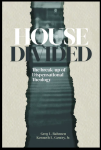 By Greg Bahnsen and Ken Gentry
By Greg Bahnsen and Ken Gentry
This book presents and defends Christian Reconstruction theology, particularly theonomic ethics and postmillennial eschatology. It does to by responding to dispensationalism’s social and exegetical theology.
For more educational materials: www. KennethGentry.com
Capital punishment is am often repeated theme in God’s Law: “He who strikes a man so that he dies shall surely be put to death” (Exo 21:12). “But if he struck him down with an iron object, so that he died, he is a murderer; the murderer shall surely be put to death” (Num 35:16). The justification for capital punishment arises from the nature of man as the image of God: “Whoever sheds man’s blood, / By man his blood shall be shed, / For in the image of God / He made man” (Gen 9:6).
6. God’s Law punishes malicious, frivolous lawsuits
Rather than allowing and even encouraging a lawyer-based society, God establishes a law-based society. For instance, his Law warns:
If a malicious witness rises up against a man to accuse him of wrongdoing, then both the men who have the dispute shall stand before the Lord, before the priests and the judges who will be in office in those days. And the judges shall investigate thoroughly; and if the witness is a false witness and he has accused his brother falsely, then you shall do to him just as he had intended to do to his brother. Thus you shall purge the evil from among you. And the rest will hear and be afraid, and will never again do such an evil thing among you. (Deut 19:16–20)
7. God’s Law protects unborn human life
The Law of God not only does not condone abortion it vigorously legislates against it:
If men fight, and hurt a woman with child, so that she gives birth prematurely, yet no harm follows, he shall surely be punished accordingly as the woman’s husband imposes on him; and he shall pay as the judges determine. But if any harm follows, then you shall give life for life. (Exo 21:22–23 NKJV)
When this case law states “yet no harm follows,” it means no harm to either the mother or the child. Here we see severe judicial consequences for even an accidental abortion, how much more would this law bear upon intentional abortion. Abortion is not only a sin, but a crime, and, indeed, a capital crime.
Click on the following images for more information on these studies:


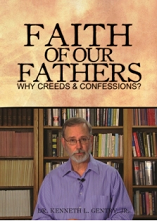
August 25, 2023
GENERAL BENEFITS OF GOD’S LAW
PMW 2023-067 by Kenneth L. Gentry, Jr.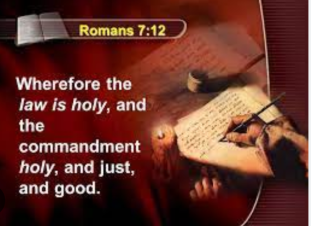
This is the second in a three part series on the benefits of God’s Law for today. In my last article I dealt with the practical (personal) benefits of the Law. But the Law of God is not simply a system of personal morality. It also reveals to us a corporate morality covering the social, political, and judicial spheres as well.
1. God’s Law provides an unchanging foundation for society
In the self-consciously Christian approach to social ethics, an unchanging Law becomes the basis of social order, rather than the changing whims of legislators, the mood of the populace, or the fads of revolutionaries. God’s Law is unchanging: “Your righteousness is an everlasting righteousness, / And Your law is truth” (Psa119:142). “The sum of Your word is truth, / And every one of Your righteous ordinances is everlasting” (Psa 119:160). Therefore, Moses warns God’s people: “Whatever I command you, you shall be careful to do; you shall not add to nor take away from it” (Deut 12:32; cp. Psa 119:44, 137, 142, 144).
We must recall that the new covenant does not bring with it a new Law, but rather a new power to keep the same Law.
“Behold, days are coming,” declares the Lord, “when I will make a new covenant with the house of Israel and with the house of Judah, not like the covenant which I made with their fathers in the day I took them by the hand to bring them out of the land of Egypt, My covenant which they broke, although I was a husband to them,” declares the Lord. “But this is the covenant which I will make with the house of Israel after those days,” declares the Lord, “I will put My law within them, and on their heart I will write it; and I will be their God, and they shall be My people.” (Jer 31:31–33).
Thus Paul declares in the new covenant era: “Do we then nullify the Law through faith? May it never be! On the contrary, we establish the Law” (Rom 3:31)?
[image error]For more information and to order click here.
" data-image-caption="" data-medium-file="https://postmillennialismtoday.files...." data-large-file="https://postmillennialismtoday.files...." class="alignright size-full wp-image-495" src="https://postmillennialismtoday.files...." alt="" />God Gave Wine (by Ken Gentry)
A biblical defense of moderate alcohol consumption. Considers all key biblical passages and engages the leading objections.
See more study materials at: www.KennethGentry.com
Some decry the law as an imposition of religion. But all law imposes religion in that law is necessarily religious, for all law is an expression of morality. And morality is based on ideas of ultimacy and value. By the very nature of the case ultimacy and values are religious conceptions; they are not mathematical formulas or chemical reactions or physical constructs. The Christian religion, being the truth (as demonstrated by a proper apologetic), provides an inerrant and authoritative Word of unchanging righteousness as the standard of social morality.
2. God’s Law promises cultural prosperity
Cultural prosperity abounds due to widespread God-defined righteousness because we live in a moral universe. Scripture teaches the inescapable reality that “the eyes of the Lord are in every place, / Watching the evil and the good” (Prov 15:3; cp. Psa 139:7; Jer 23:24). The God who watches over all things reveals his Law to us in order to define the evil and the good: “I would not have come to know sin except through the Law” (Rom 7:7). We must understand that “righteousness exalts a nation, / But sin is a disgrace to any people” (Prov 14:34).
God is sovereign in his providential administration of world affairs. Consequently, the prophets can poetically portray the clouds as the dust of his feet (Nah 1:3–6). Job can speak of God as directing the lightning (Job 37:3). Jesus says that he even controls the number of hairs on our heads and the life and death of sparrows (Matt 10:29–30). Indeed, He “works all things according to the counsel of His will” (Eph 1:11). History has meaning and purpose due to God’s personal involvement. Thus, he has ordained that Law obedience determines national destinies in the historical long run.
We see this most clearly expressed in Deuteronomy 28 where God promises personal and social blessings for obedience but threatens cultural and social upheaval for disobedience. The opening section of this chapter promises: “Now it shall be, if you will diligently obey the Lord your God, being careful to do all His commandments which I command you today, the Lord your God will set you high above all the nations of the earth. And all these blessings shall come upon you and overtake you, if you will obey the Lord your God. . . .” (Deut 28:1–2; cf. vv 3–14). And it equally threatens disaster for breach of his Law: “But it shall come about, if you will not obey the Lord your God, to observe to do all His commandments and His statutes with which I charge you today, that all these curses shall come upon you and overtake you” (Deut 28:15; cf. vv 16–68). Other such verses include: Exodus 15:26; 23:22; Leviticus 26: 3–13; Deuteronomy 7:12–26; 11:13–17.
Indeed, Paul expressly teaches that: “Now we know that whatever the Law says, it speaks to those who are under the Law, that every mouth may be closed, and all the world may become accountable to God” (Rom 3:19). Thus, all the world is accountable to God in terms of his Law. His blessings will flow or his curses befall men on the basis of their moral conduct which God evaluates through his Law.

As It Is Written: The Genesis Account Literal or Literary?
Book by Ken Gentry
Presents the exegetical evidence for Six-day Creation and against the Framework Hypothesis. Strong presentation and rebuttal to the Framework Hypothesis, while demonstrating and defending the Six-day Creation interpretation.
See more study materials at: www.KennethGentry.com
August 22, 2023
PRACTICAL BENEFITS OF GOD’S LAW
PMW 2023-066 by Kenneth L. Gentry, Jr.
This is the first in a three-part mini-series on the benefits of God’s Law for today’s world. I will begin by noting that God’s Law promises practical benefits for the individual living according to its directives. We may see this in just a few random samples.
1. God’s Law outlines specific moral behavior
Thus, it eliminates guesswork from moral conduct. “Thy word is a lamp to my feet, / And a light to my path” (Psa 119:105). The Christian should not be one who gropes in darkness, but one who walks in the light (1 John 1:7). Thus, God’s Law keeps us from stumbling morally by informing us of God’s will for “How blessed are those whose way is blameless, / Who walk in the law of the Lord” (Psa 119:1). We read of the righteous man: “How blessed is the man who does not walk in the counsel of the wicked, / Nor stand in the path of sinners, / Nor sit in the seat of scoffers! / But his delight is in the law of the Lord, / And in His law he meditates day and night” (Psa1:1–2).
The father in the home should live by and promote God’s Law in his daily life and for the good of his family:
And you shall love the Lord your God with all your heart and with all your soul and with all your might. And these words, which I am commanding you today, shall be on your heart; and you shall teach them diligently to your sons and shall talk of them when you sit in your house and when you walk by the way and when you lie down and when you rise up. And you shall bind them as a sign on your hand and they shall be as frontals on your forehead. And you shall write them on the doorposts of your house and on your gates. (Deut 6:5–9)
2. God’s Law obligates us to love our neighbor
This use of the Law encourages pleasant, harmonious inter-personal relations: “You shall love your neighbor as yourself” (Lev 19:18b). In fact, this law serves as one of the leading summary principles of God’s Law. Jesus teaches us: “‘You shall love the Lord your God with all your heart, and with all your soul, and with all your mind.’ This is the great and foremost commandment. The second is like it, ‘You shall love your neighbor as yourself.’ On these two commandments depend the whole Law and the Prophets” (Matt 22: 37–40). The New Testament frequently repeats this law (Matt 19:19; Mark 12:31; Luke 10:27; Rom 13:9; Gal 5:14), even calling it “the royal law” (Jms 2:8).

Greatness of the Great Commission (by Ken Gentry)
An insightful analysis of the full implications of the great commission. Impacts postmillennialism as well as the whole Christian worldview.
See more study materials at: www.KennethGentry.com
3. God’s Law requires us to treat our enemies respectfully
In Exodus 23: 4–5 we read: “If you meet your enemy’s ox or his donkey wandering away, you shall surely return it to him. If you see the donkey of one who hates you lying helpless under its load, you shall refrain from leaving it to him, you shall surely release it with him.” Leviticus 19:18 commands: “You shall not take vengeance, nor bear any grudge against the sons of your people, but you shall love your neighbor as yourself; I am the Lord.”
The wisdom literature applying this law frequently expands upon it. Proverbs commands: “Do not rejoice when your enemy falls, / And do not let your heart be glad when he stumbles; / Lest the Lord see it and be displeased, / And He turn away His anger from him” (Prov 24:17–18). The Book of Job asks: “Have I rejoiced at the extinction of my enemy, / Or exulted when evil befell him? (Job 31:29). When men hold God’s Law in high regard it reduces personal vengeance and enhances social stability.
4. God’s Law expects us to insure the safety of others
It speaks particularly of guests on our property. Deuteronomy 22:8 commands: “When you build a new house, then you shall make a parapet for your roof, that you may not bring bloodguilt on your house if anyone falls from it.” In fact, this is not only a moral obligation but a civil one as we see in a parallel case law: “If a man opens a pit, or digs a pit and does not cover it over, and an ox or a donkey falls into it, the owner of the pit shall make restitution; he shall give money to its owner, and the dead animal shall become his” (Exo 21:33–34).
5. God’s Law expects us to pay for harm we cause
It does so by obligating us to fully compensate those whom we harm. Exodus 21:18–19 warns: “If men contend with each other, and one strikes the other with a stone or with his fist, and he does not die but is confined to his bed, if he rises again and walks about outside with his staff, then he who struck him shall be acquitted. He shall only pay for the loss of his time, and shall provide for him to be thoroughly healed.”
Lord of the Saved
(by Ken Gentry)
A critique of easy believism and affirmation of Lordship salvation. Shows the necessity of true, repentant faith to salvation.
See more study materials at: www.KennethGentry.com
6. God’s Law forbids interest-bearing loans to the needy
We read in Exodus 22:25–27: “If you lend money to any of My people who are poor among you, you shall not be like a moneylender to him; you shall not charge him interest. If you ever take your neighbor’s garment as a pledge, you shall return it to him before the sun goes down. For that is his only covering, it is his garment for his skin. What will he sleep in? And it will be that when he cries to Me, I will hear, for I am gracious.” This case law protects the needy from unscrupulous oppression.
I could present many other case law samples, but these should suffice as illustrations of the practical beauty and applicability of God’s Law.
August 18, 2023
BAHNSEN AND MATTHEW 5:17
PMW 2023-065 by Kenneth L. Gentry, Jr.
Sadly, many challenges against Greg Bahnsen’s Theonomy in Christian Ethics (TCE) are based on mistaken assumptions rather than careful observations. This is the case with one of Bahnsen’s loudest critics, Dr. T. David Gordon who wrote his “Critique of Theonomy: A Taxonomy” (CT).
Gordon’s “Critique” opens with a few comments on polemics, noting potential areas of difficulty (CT, 23). He recognizes (as we all should) that our polemics can be undercut by “whatever is untrue, unclear, or unhelpful” (CT, 25). Unfortunately, by overstating his case he inadvertently succumbs to that which is “untrue, unclear, or unhelpful.”
Gordon’s first point in this section of his critique is blunted by his exaggerated claims regarding Bahnsen’s dependence on Matthew 5. He writes: “Paul Fowler correctly observed that Bahnsen’s entire case for his approach to the ‘abiding validity of the law in exhaustive detail’ was based upon his understanding of Matt 5:17–21. . . . If Bahnsen cannot make his case from this text, his case is not made” (CT, 28). One supporting evidence for Fowler’s statement affirmed by Gordon is: “Fowler pointed out how frequently this passage is cited in Theonomy in Christian Ethics as proof of the observation” (CT, 28).

Covenantal Theonomy
(by Ken Gentry)
A defense of theonomic ethics against a leading Reformed critic. Engages many of the leading objections to theonomy.
See more study materials at: www.KennethGentry.com
Because Gordon did not make the effort to check whether Bahnsen might have responded somewhere along the way to his critics on this supposed problem, he is not aware of how Bahnsen counters such objections. This is all the more remarkable because of the enormous volume of critiques of Bahnsen — and because Theonomy itself confronts it. As Gordon surely knows, resistance to theonomic ethics has spawned widespread and prolonged rebuttals in presbytery debates, public symposia, lengthy articles, and whole books. We know that Gordon is aware of this immense backlash against Theonomy, after all, he took the time to jump into the fray and cites several of the objectors in offering his “taxonomy” on the matter.
In No Other Standard Bahnsen alludes to various foundational texts, when he responds to a particular critic. He complains that the critic rebuts the theonomic argument “only after the main supporting texts for the theonomic view (viz., Matthew 5:17-19 and Romans 13:1-7) have been removed from consideration” (NOS, 163). Notice that Bahnsen himself declares that there are “main supporting texts” (plural), and even cites one of them in addition to Matthew 5: Romans 13.
In another place, Bahnsen parallels 2 Timothy 3:16-17 with Matthew 5:17 as a key text: “Jesus warned against dismissing even the least Old Testament commandment (Matt. 5:19), and Paul taught that every Old Testament scripture instructs us in righteousness (2 Tim. 3:16-17)” (NOS, 99). In fact, 2 Timothy 3:16-17 is a favorite text for Bahnsen, which he often cited along with Matthew 5. For example: “Nor is it clear how this restriction can be harmonized with the New Testament endorsement of every scripture (2 Tim. 3:16), every command (James 2:10), even the least command (Matt. 5:19), every word (Matt. 4:4) and every letter (Matt. 5:18) of the Old Testament” (NOS, 125). Obviously, Bahnsen focuses on a variety of foundational biblical texts — though Matthew 5 remains the key one among them.
Why does Gordon not suppose that somewhere along the way Bahnsen would provide counter-evidence on the objection that his whole argument rests solely on one text? Was not Bahnsen a philosophically-trained debater (he earned a Ph.D. in philosophy from the University of Southern California and has several public debates on tape)? Did he not possess an “over-heated typewriter” (Kline’s derogatory statement regarding Bahnsen’s prodigious output)? Was he not subjected to relentless criticisms regarding his theonomic ethics? According to Gordon himself, did not Theonomy generate “an intellectual movement” (CT, 43)? Why would he not think it likely that the movement had dealt with such a complaint? This is especially problematic in that Gordon was offering a rigorous, academic response to Bahnsen and in a respected Reformed theological journal.
In point of fact, Bahnsen does respond to this very objection in Strickland’s The Law, the Gospel, and the Modern Christian. Bahnsen answers Strickland thus:
“He makes a weak effort in this under his discussion of ‘The Mosaic Law and the Christian,’ starting off with a misbegotten attempt to reduce how much effort would be needed for the task. First, Strickland tries to reduce the theonomic position to Matthew 5:17-19 (calling it ‘the major justification for theonomy’). . . . Ah, would that it were so easy! The fundamental operating premises of Theonomic Ethics could be — indeed, in my books, are — readily proven from any number of New Testament passages, only one of which is Matthew 5:17-19. . . . The theonomic thesis could be demonstrated without any reference to this text at all.”
Gordon fumbles here by employing Fowler’s older study, released in 1979, and then again in 1980 (after changing it radically due to Bahnsen’s devastating response).
Interestingly, in his “Conclusion” to Theonomy Bahnsen only mentions Matthew 5 in one place, and that only as a closing motto (TCE, 476). In fact, he declares in his six page conclusion: “The theonomic ethic is substantiated in multiple ways throughout the pages of the New Testament” (TCE, 474).
 God’s Law Made Easy (by Ken Gentry)
God’s Law Made Easy (by Ken Gentry)
Summary for the case for the continuing relevance of God’s Law. A helpful summary of the argument from Greg L. Bahnsen’s Theonomy in Christian Ethics.
See more study materials at: www.KennethGentry.com
In his later Preface to the second edition of Theonomy (1983) Bahnsen provides a ten point statement “that draws tegether, clarifies, and states in distilled form the vital teachings elaborated in the full text of Theonomy in Christian Ethics” (TCE, xxv). Not one of these ten points either alludes to Matthew 5, references it, or quotes words or phrases from it. This is contrary to Gordon’s assertion that “if Bahnsen cannot make his case from this text, his case is not made” (CT, 28).
Elsewhere Bahnsen expressly denies that Theonomic Ethics rests solely on Matthew 5. In responding to Reformed theologian Paul G. Schrotenboer, he comments on the role of plerosai (“fulfill”) in Matthew 5:17 for his argument. He not only states that this important aspect of Jesus’ declaration is not “in any way essential to its [Theonomy’s] argumentation,” but he believes “the debate over how to translate or interpret that Greek word is really irrelevant.” This does not sound like a statement from someone who case “cannot be made” apart from this passage.
In No Other Standard Bahnsen states:
“Did Jesus assume basic continuity or basic discontinuity between His ethic and that of Moses? In asking whether we should presume that the old covenant law is binding or abrogated today, one relevant and important passage which cannot be avoided is Matthew 5:17-19. Thus it was given detailed attention in my book Theonomy in Christian Ethics, even though it is not the only text which could be used to substantiate the theonomic operating premise.” (NOS, 273, emphasis mine)
Thus, even though Gordon complains: “If Bahnsen cannot make his case from this text, his case is not made” (CT, 28), Bahnsen himself writes: the “theonomic operating premise” is not “substantiate[d]” on this one “text” (NOS, 273).
In fact, the evidence for Gordon’s statement is based on Fowler’s research: “Fowler pointed out how frequently this passage is cited in Theonomy in Christian Ethics as proof of the observation” (CT, 28). If Fowler’s research method is followed consistently, though, we could actually reach the opposite conclusion, for Theonomy’s Scripture index contains thirteen pages of three column references to the New Testament (TCE, 597-610), of which less than a page of them index Matthew 5.
Contrary to Gordon, then, Matthew 5 is Bahnsen’s locus classicus, not his sine qua non.
Yet theonomists gladly affirm that Bahnsen does emphasize Matthew 5:17-21 as a key passage in establishing the presumption of continuity between the Old and New Testament ethical standards. So then, despite his tendency to overstatement, if Gordon could demonstrate that Matthew 5 was woefully mishandled in Theonomy, he would have significantly impaired Bahnsen’s argument — at least as it is presented in Theonomy in Christian Ethics. But he would not have destroyed the entire foundation to the theonomic system. To be sure, Bahnsen certainly never backed off of his emphasis on the passage; thus, his exegesis is fair game for criticism (unlike with Gordon’s first criticism).
Click on the following images for more information on these studies:
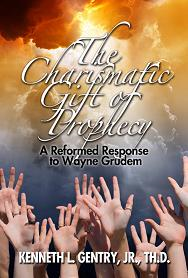
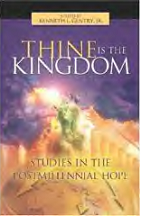
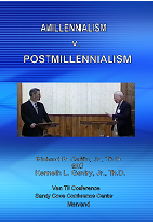
August 15, 2023
TERRY ON JOHN IN PATMOS
 PMW 2023-064 by Milton Terry
PMW 2023-064 by Milton Terry
GENTRY INTRODUCTION
This study is taken from Milton S. Terry’s, The Apocalypse of John. Terry was an excellent scholar and historian. This material should be helpful for Revelation enthusiasts.
JOHN ON PATMOS
Why Was John on Patmos?
John’s own testimony is that he “was in the island which is called Patmos on account of the word of God and the testimony of Jesus” (Rev. 1:9). The phrase “on account of the word of God” (διὰ τὸν λόγον του θεου; dia ton logon tou theou), according to the well-established usage of διὰ (dia) with the accusative, means for the sake of the word. It gives the ground or reason for what is stated. So in chapter 2:3, it is said: “Thou didst endure for my name’s sake;” that is, the great objective reason for the endurance in the midst of trials was devotion to the name of Christ. So again in 4:11: “On account of thy will they were and were created;” that is, all things were brought into existence because that was the will of God. The same meaning inheres in this formula in 6:9; 7:15; 12:11,12; 13:14; 18:8, 10, 15; 20:4. Now, according to 1:2, “the word of God and the testimony of Jesus” are no other than this Revelation concerning all things which John saw.
The most obvious meaning, therefore, of verse 9 is that John was in Patmos for the sake of, or on account of, this Revelation of Jesus Christ. The first and most emphatic thing the writer tells us is that God gave this “revelation” (ἀποκάλυψις, apokalupsis) to Jesus and Jesus signified it through his angel unto John, who witnessed it accordingly as God’s word and Jesus’s testimony (vv. 1–2). It was on this account, not on account of “the tribulation and kingdom and patience” mentioned in the first part of verse 9, that John “was in the island which is called Patmos.”
THE APOCALYPSE OF JOHN
by Milton S. Terry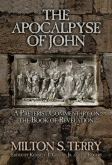
This book is Terry’s preterist commentary on the Book of Revelation. It was originally the last half of his much larger work, Biblical Apocalyptics. It is deeply-exegetical, tightly-argued, and clearly-presented.
For more study materials: https://www.kennethgentry.com/
But because John announces himself as a “brother and partaker” in the tribulation of the times, nearly all interpreters have jumped to the conclusion that he must have been in Patmos because of such tribulation. The fact, also, that criminals were banished to that barren island by the Roman emperors has seemed to confirm the tradition that John was dwelling there as an exile when he saw the visions of this Apocalypse. There is certainly nothing improbable in the tradition, but aside from what has been inferred from the single statement of Revelation 1:9, there appears to be no convincing evidence that John was ever an exile in Patmos.
Early Church Traditions
The traditions of the second and third centuries touching the movements of the first apostles are of very little value. Some of them may be true; but none of them are to be accepted as well-attested facts of history. The tradition of John’s banishment may be only a specimen of the manner in which a statement like that of Revelation 1:9, was taken up a century after it was written, given a particular meaning, and that meaning propagated without contradiction until it came to be accepted as an unquestionable fact. Aside from this passage there is no more authority for the tradition of John’s exile than there is for the statement of Victorinus that he was sent to Patmos to work in a mine; or of Tertullian that he was first plunged into burning oil at Rome and, having suffered no harm, was sent as a captive to Patmos; or of Polycrates that he was a martyr and teacher and also a priest who bore the sacerdotal plate; or of Simeon Metaphrastes that he was shipwrecked off the coast of Ephesus. These and a score of other similar stories illustrate the tendency of early times to take up a word or hint about an apostle and magnify it into a legend. Such legends can have no real value as trustworthy history.
The last reference to John in the Acts of the Apostles is in Revelation 12:2. It is not improbable that after the death of his brother James, there mentioned, John left Jerusalem and proceeded to found Christianity in some of the cities of western Asia. Perhaps one reason why Paul was forbidden of the Spirit to preach in Asia (Acts 16:6) was because John was already on that field. Or possibly John made a journey to Rome, as Tertullian says and was thence banished to Patmos at the time Claudius gave command for all Jews to depart from the imperial city (Acts 18:2). He may have subsequently visited Jerusalem as many times as Paul did.
It is worthy of note that the Muratorian Fragment, a very ancient and important document (A.D. 170), declares that “the blessed apostle Paul, following the manner of his predecessor John, wrote in like manner to seven churches expressly by name.” This testimony clearly puts John before Paul in writing epistles to the churches and tends to confirm the position taken above that Galatians 4:25–26, is an allusion to John’s picture of the heavenly Jerusalem. The apostle John might have been quietly laboring in Smyrna, or in some neighboring parts of Asia Minor, while Paul was at Ephesus. To assume that in such case we must have had some allusion to it in Paul’s writings, or in some other New Testament writing, is altogether baseless. The absence of any reference to John in the latter half of the Acts of the Apostles ought to be a sufficient admonition not to presume upon the silence of the New Testament on such matters.
BEFORE JERUSALEM FELL
Doctoral dissertation defending a pre-AD 70 date for Revelation’s writing (459 pp; paperback). Thoroughly covers internal evidence from Revelation, external evidence from history, and objections to the early date by scholars.
For more study materials: https://www.kennethgentry.com/
Our object in giving so much space to this question about John’s banishment to Patmos is to point out the worthlessness of much that has been written on such matters of little or no importance. Our contention is that the question of John’s actual residence in Patmos, whether as an exile, or by reason of shipwreck, or otherwise, is of no importance in the exposition of the Apocalypse. But some interpreters seem to think that a whole scheme of exposition might be based upon an inference drawn from such an incidental statement as that of Revelation 1:9 (cf., Alford’s Greek Testament with Notes, in loco). An impression is made to take the place of proof and often magnified to the neglect of other statements or inferences of equal value. Whether the author of this book went to Patmos as an exile, or for the purpose of receiving this “word of God and testimony of Jesus,” ought not to be treated as a question of any serious moment.
One might even go further and maintain that John’s being in Patmos may, like Daniel’s being “in Shushan the palace, which is in the province of Elam” (Dan. 8:2), have been ideal only. So Ezekiel was “brought in the visions of God to Jerusalem” (Eze. 8:3). John immediately tells us that he was “in spirit,” and as the visions he saw of seals, trumpets, beasts, and a woman sitting upon many waters had no external reality in the physical world, so his being in Patmos might be understood as a symbolical expression equivalent to being apart in a lonely desert place.
Whatever, then, the actual facts were, the great divine purpose of John’s being in Patmos was to receive this revelation of things then about to come to pass. If he were banished to that desert place because he had made himself obnoxious to the authority of Rome, such fact was but incidental to the great purpose of God thereby effected, namely, the reception of the word of God and the testimony of Jesus Christ which are written in this book.
Click on the following images for more information on these studies:

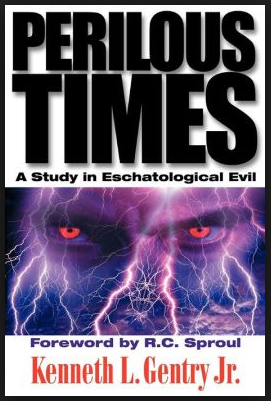
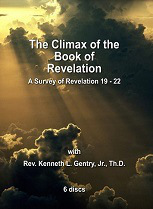
August 11, 2023
FULLNESS OF TIME & NEW CREATION
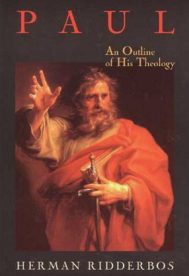 PMW 2023-063 by Herman Ridderbos
PMW 2023-063 by Herman Ridderbos
GENTRY INTRODUCTION
The following material is taken from Ridderbos’ important work: Paul: An Outline of His Theology (pp. 44ff). Some of his footnotes have been omitted as unnecessary for my present concern. I highly recommend that my readers study Herman Ridderbos, Geerhardus Vos, and Richard B. Gaffin, Jr. as insightful biblical scholars (even though they are amillennial).
RIDDERBOS EXPLICATION
The extent . . . to which Paul saw the advent and work of Christ as revelation of the fulfilling activity of God in history and as the breaking through of the great time of salvation can immediately be demonstrated on the basis of a number of typical pronouncements from his epistles.
Galatians 4:4
What is said in Galatians 4:4 of “the fullness of the time” and in Ephesians 1:10 of “the fulness of the times” is surely of special important:
“but when the fullness of the time came, God sent forth his Son.”
“the mystery of his [God’s] will …, unto a dispensation of the fullness of the times, to sum up all things in Christ, the things in the heavens, and the things upon earth.”
What is meant by this “fullness of the time” is not only the maturation of a specific matter in the great framework of redemptive history, but the fulfillment of the time in an absolute sense. The time of the world has come by a conclusion with Christ’s advent. However much this fulfillment still bears a provisional character and the perfectum is followed yet again by a futurum, nevertheless the pleroma of the time or of the times is here spoken of as a matter that has already taken effect and thus in principle has been settled.
The Early Date of Revelation and the End Times: An Amillennial Partial Preterist Perspective
By Robert Hillegonds
This book presents a strong, contemporary case in support of the early dating of Revelation. He builds on Before Jerusalem Fell and brings additional arguments to bear.
See more study materials at: www.KennethGentry.com
2 Corinthians 6:2
This commencement of the great time of salvation is no less clearly attested in 2 Corinthians 6:2, where the apostle as with finger extended points to its presence: “Behold, now is the acceptable time; now is the day of salvation!”
Here, too, what is to be understood by “the acceptable time” and “the day of salvation” is not merely a certain saving event or opportunity that one must embrace and which may perhaps presently disappear again. Nothings less is intended than that the decisive, long-expected coming of God has dawned, the hour of hours, the day of salvation in the fulfilling, eschatological sense of the word. This is apparent as well from the preceding context where Paul writes of the great change that has entered with the death and resurrection of Christ as follows: “Wherefore if any man is in Christ , he is a new creation; the old things have passed away; behold, the new have come” (2 Cor. 5:17).
2 Corinthians 5:17
When he speaks here of “new creation,” this is not meant merely in an individual sense (“a new creature”), but one is to think of the new world of the re-creation that God has made to dawn in Christ, and in which everyone who is in Christ is included. This is also evident from the neuter plural that follows: “the old things have passed away, the new have come,” and from the full significance that must be ascribed here to “old” and “new.” It is a matter of two worlds, not only in a spiritual, but in a redemptive-historical, eschatological sense. The “old things” stand for the unredeemed world in its distress and sin, the “new things” for the time of salvation and the re-creation that have dawned with Christ’s resurrection. He who is in Christ, therefore, is new creation: he participates in, belongs to, this new world of God. [n. 1]
The “mystery”
The qualification of this event as the “revelation of the mystery,” or, the “making known” of that which until now was “kept secret” or “hidden,’ for which the apostle has a predilection, is also indicative of this eschatological character of the redemptive dispensation that has dawned in Christ and of its proclamation by Paul. What a dominant place this expression occupies throughout all of Paul’s epistles may appear from the following [verses: Rom. 16:25, 26; Col. 1:26; cf. 2:2, 3; Eph. 1:9, 10; Eph. 3:4, 5; cf. v. 3; 1 Cor. 2:7; 2 Tim. 1:9, 10; cf. also Tit. 1:2, 3] [n. 2]

Covenantal Theonomy
(by Ken Gentry)
A defense of theonomic ethics against a leading Reformed critic. Engages many of the leading objections to theonomy.
See more study materials at: www.KennethGentry.com
The attempt has often been made to understand “mystery” by analogy with the significance of this word in the ancient mystery religions in the sense of a kind of secret teaching that is “revealed” to only a few intimates. In Paul, however, it has a completely different sense, as is apparent also from a comparison with newly unlocked Jewish sources [i.e., from Qumran]: “mystery,” that which has been “hidden,” is to be understood, as a few of the texts cited say in so many words, in connection with the hidden counsel of God in relation to his redemptive work in history. “Hiddenness,” ‘mystery,” etc., has, therefore, in addition to a noetic a plainly historical connotation: it is that which has not yet appeared, that which still exists in the counsel of God and has not yet been realized in history as fulfillment of that counsel.
Accordingly the corresponding word “reveal” not only means the divulging of a specific truth or the giving of information as to certain events or facts, but the appearance itself, the becoming historical reality of that which until now did not exist as such, but was kept by God, hidden, held back. As such, namely, as the realized redemptive plan of God, this mystery is consequently the object of Paul’s proclamation and of the revelation of God to his saints and so forth.
From the way in which this expression — certainly very characteristic for Paul — is used, the eschatological nature of the content of his preaching is apparent once again. For this mystery has reference to the purpose of God with a view to the fullness of the times (Eph. 1:9, 10). Standing over against the “kept secret for long ages,” “hidden for ages and generations,” etc., is again and again the “now” of the revelation, the end of the waiting ages, the ultimate intervention of God according to his counsel and promise. What is here called in various nuances the revelation of the mystery is nothing other than that which the fullness of the time brings to view; it is the fulfillment of the eschatological promise of redemption in the times appointed for it, its “own times,’ that is denoted in this fashion.”
NOTES
1. That ktisis here does not simply mean “creature” in the sense of individual man or being, but must be understood in the full sense as the new life called forth by God’s omnipotence, is clearly evident form a comparison with such passages as Eph. 2:10, 15; 4:24; Col. 3:10; cf. also Foerster in TDNT, III, p. 1034, s.v. ktizo. To the same effect G. Vos, The Pauline Eschatology, 1930, pp. 46, 47: “…not merely individual, subjective conditions have been changed, but …. there has been created a totally new environment, or, more accurately speaking: a totally new world, in which the person spoken of is an inhabitant and participator.”
2. Gentry editorial note: Instead of printing out the verses, as in Ridderbos’ book, I have simply listed the verses that he presents.
Click on the following images for more information on these studies:



August 8, 2023
BAHNSEN ON “THIS AGE”
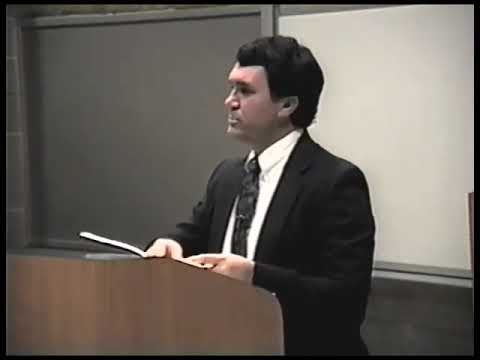 PMW 2023-062 by Greg L. Bahnsen
PMW 2023-062 by Greg L. Bahnsen
GENTRY INTRODUCTORY NOTE
I am currently researching material for a new book. I will be dealing the two-age structure of redemptive history. I will be explaining its significance, not only for understanding the Olivet Discourse properly (due to Matt. 24:3), but even the whole New Testament.
I am seeing several Christians writers who are publishing materials showing that they do not understand the concept of “this age” and “the age to come” in the New Testament. This has led them to make serious errors in their theological ramblings.
In this posting, I will be presenting a snippet from Greg Bahnsen’s book Victory in Jesus (131–32). My interest is in Bahnsen’s affirmation of the two-age structure of redemptive history, which recognizes (as do most biblical scholars and Greek lexicographers) that “age” (aion) can be interchangeable with “world” (kosmos).
Bahnsen studied under Richard B. Gaffin at Westminster Seminary, where Gaffin spent much time in explicating the two-age structure found in the New Testament. And Gaffin studied under two-age advocates John Murray and Cornelius Van Til, who were students of Geerhardus Vos. Vos’ work is a goldmine of information on this essential structuring device embedded in the New Testament, as is the work of Herman Ridderbos.
House Divided: The Break-up of Dispensational Theology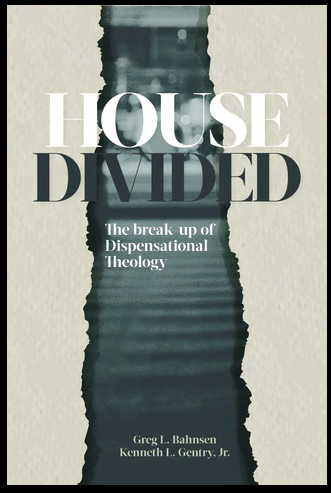 By Greg Bahnsen and Ken Gentry
By Greg Bahnsen and Ken Gentry
This book presents and defends Christian Reconstruction theology, particularly theonomic ethics and postmillennial eschatology. It does to by responding to dispensationalism’s social and exegetical theology.
For more educational materials: www. KennethGentry.com
BAHNSEN ON “THIS AGE”
“From the fact that ‘this world’ is interchangeable with ‘this age’ (e.g., 1 Cor. 1:20ff; 2:16; 3:19), we infer that the phrase ‘this age’ can also be understood as referring to an ethical or spiritual realm, rather than exclusively to a set period of time.
From the perspective of New Testament theology, the ‘age to come’ has broken in on ‘this age’; those who are saved now enjoy the presence of the future age. With the first advent of Christ, God’s ordained moment has arrived (Gal. 4:4), the kingdom has drawn near (Matt. 3:2; 4:17; 10:7; Mark 1:15; Luke 10:9, 11), the great jubilee has arrived (Luke 4:!6–21), the good news of the kingdom has come into effect (Luke 16:16; Matt. 11:2–15), the Old Testament promise has been realized (Rom. 1:2; 16:25–26), the messianic marriage supper has approached (Mark 2:18–22).
With the coming of the Spirit at Pentecost, the ‘last days’ of Joel’s prophecy have arrived, and God’s Anointed is declared to be permanently enthroned in David’s kingdom (Acts 2); this Spirit is our down payment (‘earnest’) on the future inheritance (2 Cor. 1:22; 5:5; Eph. 1:14) and the first-fruits of the resurrection order (Rom. 8:23; cf. Col. 1:18). The kingdom of God and coming age have been installed.
After a long period of anticipation, God has now spoken to us by His Son ‘at the end of these days’ (Heb. 1:2). Christ has been manifest ‘at the end of the ages’ (Heb. 9:26), ‘in the last times’ (I Pet. 1:20). Consequently, ‘the ends of the ages has arrived’ (1 Cor. 10:11). The eschatological age has already begun, which means that ‘this age’ and ‘the age to come’ are coexistent during the present era. God’s kingdom of salvation is already experienced by some, but rejected by others.
The ‘coming age’ and ‘this age’ live side-by-side for a time. The redemptive work of Christ has delivered us from the power of darkness (Col. 1:13) that is, from this present evil age (Gal. 1:4). Being ‘in Christ’ (in contrast to being ‘in the evil one,’ 1 John 5:19) means that the ‘new creation’ has dawned, making the old things new (2 Cor. 5:17; cf. 6:2). Therefore, it is now possible for men to ‘taste the power of the coming age’ (Heb. 6:5). Two orders (old creation and new creation, spiritual death and regeneration, damnation and salvation) are presently operative, and the Bible expresses this fact by teaching that ‘this age’ and ‘the coming age’ are currently contemporaneous.”
THE TWO AGES AND OLIVET (advertisement)
I am currently researching a study of the Two-Age structure of redemptive history. My starting point is based on the disciples’ questions to Jesus in Matthew 24:3. Much confusion reigns among those unacquainted with the Two-Age analysis of history, which was promoted by Jesus (Matt. 12:32; Mark 10:29-30) and by Paul (Gal. 1:4; Eph. 1:21). The Two Ages are not the old covenant and the new covenant, but world history since the fall and the consummate order following the Second Coming and the Final Judgment.
If you would like to support me in my research, I invite you to consider giving a tax-deductible contribution to my research and writing ministry: GoodBirth Ministries. Your help is much appreciated!
Kenneth L. Gentry Jr.'s Blog
- Kenneth L. Gentry Jr.'s profile
- 85 followers



